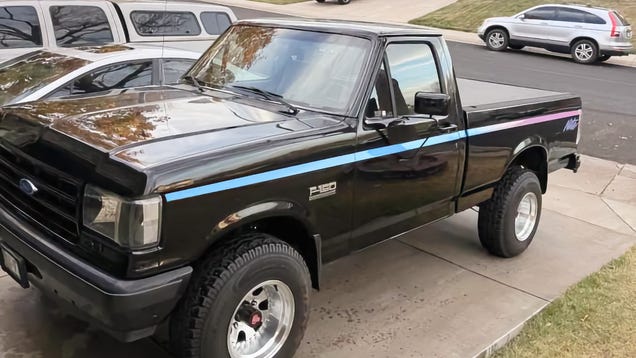If you’ve recently been Googling for car insurance quotes, you’re not alone. In 2024, searches for “How much is car insurance” hit an all-time high, according to data from Google Trends.
It’s no mystery why. Car insurance costs have sky-rocketed over recent years, with premiums up 26% just this year, according to Bankrate. Nationally, the average annual car insurance premium is just over $2,500, but that rate can run much higher in states like Florida, where natural disasters are more common. This year, the average annual premium in the Sunshine State increased 24%, to a staggering $3,945.
If rising costs have you reevaluating your auto insurance or you’re just trying to start a new policy, we rounded up the top five most-searched-for auto insurance questions and found the answers you need.
How much is car insurance per month?
The true but annoying answer to this question is: it depends. Nationally, the average monthly premium is about $212, according to Bankrate. But, that number can vary wildly depending on where you live, what you drive, and who you are.
The location
Where you live is one of the biggest factors when it comes to the cost of car insurance. Vermont, Idaho, and Maine have the lowest premiums in the country—$125 or less monthly, on average—while Florida, New York, and Louisiana have the highest premiums, ranging from an average of $300 to $330 every month. As a general rule, insurance is pricier if you live in a city and if you park your car on the street, but there are exceptions.
The car
The car itself is another big factor in determining your monthly insurance cost. Sports cars, high-end luxury cars and electric vehicles all tend to have higher premiums, so if you’re currently looking at a new Corvette, it’s worth factoring in insurance costs before making a final purchase. If you’re in the market for a car, many of Subaru’s models, including the Outback, Crosstrek and Forester have the lowest premiums of any vehicles in the country, according to NerdWallet. Other options like the Toyota Rav4 and Honda CR-V also have relatively low premiums on average, around $132 monthly.
The driver
One of the most influential factors driving insurance costs is the person behind the wheel. Insurers consider a host of things including a driver’s accident and driving history. At-fault accidents, DWIs, and bad credit all make a driver riskier to insure, making the insurance company charge more to cover you. On average, insurance costs are about 50% higher for a driver with an at-fault accident on their record, while drivers with a recent DWI can expect their premiums to increase by about 84%, according to NerdWallet.
But even things out of your control affect your premiums, including age and gender. On average, men pay about 4% more than women for insurance, according to MarketWatch. Across men and women, 20-year-old drivers pay roughly twice as much for insurance as 40-year-old drivers. The gender gap is also more impactful for younger drivers, with 20-year-old men paying 11.4% more than same-aged women. Gender becomes far less influential with age. At 40 years old, the average premium difference between men and women is less than 1%, according to Bankrate.
Related: America’s new car crisis: Consumers want more but can't afford it
What is the main purpose of having auto insurance?
Besides the fact that having car insurance is legally required in almost every state, it also provides financial protection for drivers, passengers, and others on the road. Liability coverage is the minimum level of insurance required in most states, ensuring that if you’re at fault in an accident, costs like medical bills, property damage, and legal fees are covered. Liability coverage is the cheapest option if you’re desperate to save money, but it also means you’re on your own for damages to your vehicle.
Optional coverages like collision and comprehensive insurance protect your own vehicle from damages due to accidents, theft, or natural disasters. Car insurance can also cover medical expenses for you and your passengers after an accident. Ultimately, car insurance goes beyond legal requirements, offering peace of mind and financial security against a wide range of risks.
Related: I went to an EV expo. Here are the brands people lined up to test drive
What is comprehensive auto insurance?
Comprehensive auto insurance is a type of coverage that helps pay for damage to your car from events other than collisions. Unlike liability or collision coverage, comprehensive insurance covers incidents like theft, vandalism, fire, natural disasters, and damage from falling objects like hail or tree branches.
This coverage is often required by lenders if you’re financing or leasing your car, as it helps protect their investment. Even if you own your car outright, comprehensive insurance can be valuable for protecting your vehicle against unexpected, non-accident-related damages.
What is liability car insurance coverage?
Liability insurance is coverage that helps pay for expenses if you’re responsible for an accident that causes injury or property damage to others. This type of insurance typically includes two parts: bodily injury liability and property damage liability. Bodily injury liability covers medical expenses, lost wages, and sometimes legal fees if others are hurt in an accident you caused. Property damage liability helps pay for repairs to the other party’s car or other property, such as fences or buildings.
Liability coverage is required by law in most states, with minimum coverage limits that vary by location. This type of insurance protects you financially by covering costs for which you could be legally liable, helping you avoid paying out of pocket in these situations.
Related: The U.S. wants to eliminate traffic fatalities. Here's how.
What is the cheapest car insurance?
If you’re desperate to save money, paying for only liability coverage will get you much lower premiums. But, this route isn’t recommended for most people. Unless you’re driving a total clunker, you’re better off in the long term paying for more than liability. Otherwise, you could be looking at thousands of dollars in repairs after an accident with no help from your insurance.
There are smart ways to help get cheaper insurance without sacrificing too much on coverage. If you’re looking at buying a car, search for one that is cheaper to insure.
And if you already have a vehicle, you can compare quotes from different insurers to get the best price. USAA, Erie Insurance, Auto-Owners, Nationwide, Geico and Progressive all had average premiums below the national average, according to an analysis done by U.S. News. On the flip side, State Farm, American Family, Farmers and Allstate all had average premiums above the national average. Lastly, you can look for special discounts, like pay-in-full and safe driving discounts to bring your premium down without cutting your coverage.
Final discounts
With car insurance premiums on the rise, taking time to review your coverage options is a relatively easy way to save a lot of money. Comparing quotes, choosing a car with lower insurance costs, and looking for available discounts can all help you find a policy that fits your needs without bruising your bank account.
The right coverage can provide peace of mind, knowing that you’re prepared for the unexpected on the road. And if that isn’t a compelling enough reason to get car insurance, remember that you’re legally required to anyway, so you might as well save as much money as you can doing it.
Related: 2024 Ford Ranger Raptor: Pushed to its limits in Utah’s rugged desert

 1 week ago
4
1 week ago
4








 English (US) ·
English (US) ·